the philippines is culturally isolated from the rest of asia - and other things i used to believe
why this rhetoric isn't helpful and what can be done?
A quick glance at Filipino history and culture shows one where Western cultures have seemingly conquered and spread their culture, leaving little “original” culture left, whatever that means.
This is, or was (wishful thinking?) a common opinion held by many, and for some Hispanistas, this was seen as a source of pride. According to them, being a former Spanish colony and inheriting so much of that culture was what made us unique and we should be proud of that.
This kind of mindset was also taught to us, perpetuated by the media, by the education system, and by people in power. That us being colonized makes us unique compared to other Asians, that we are the only Catholic nation in Asia, and that we have little to nothing in common with our ASEAN neighbors1. Thailand? Nah, they’re so Buddhist. Indonesia? Malaysia? They follow Islam, we don’t (mostly). We are so isolated from Asia, we actually align more with Mexico and Latin America. After all, we’re all Catholic and our language has a lot of Spanish loanwords so we basically speak Spanish, right? Aren’t we the “Mexicans of Asia”2? If we’re Asian, why are we Latino shaped? A lot of us have Spanish blood, right? We all have that one great-great grandparent who’s from Spain!
Then, what about our original culture. Surely we have that, right? They’ll tell us yeah, there is “original culture” left! It’s only the tribes up in the mountains and the Muslims down south that have it though :( you, a Catholic Filipino, gave that up completely when your ancestors submitted to Spain. This thinking even led to the idea that, do we even deserve to be called Asian? Are we even Asian at all?
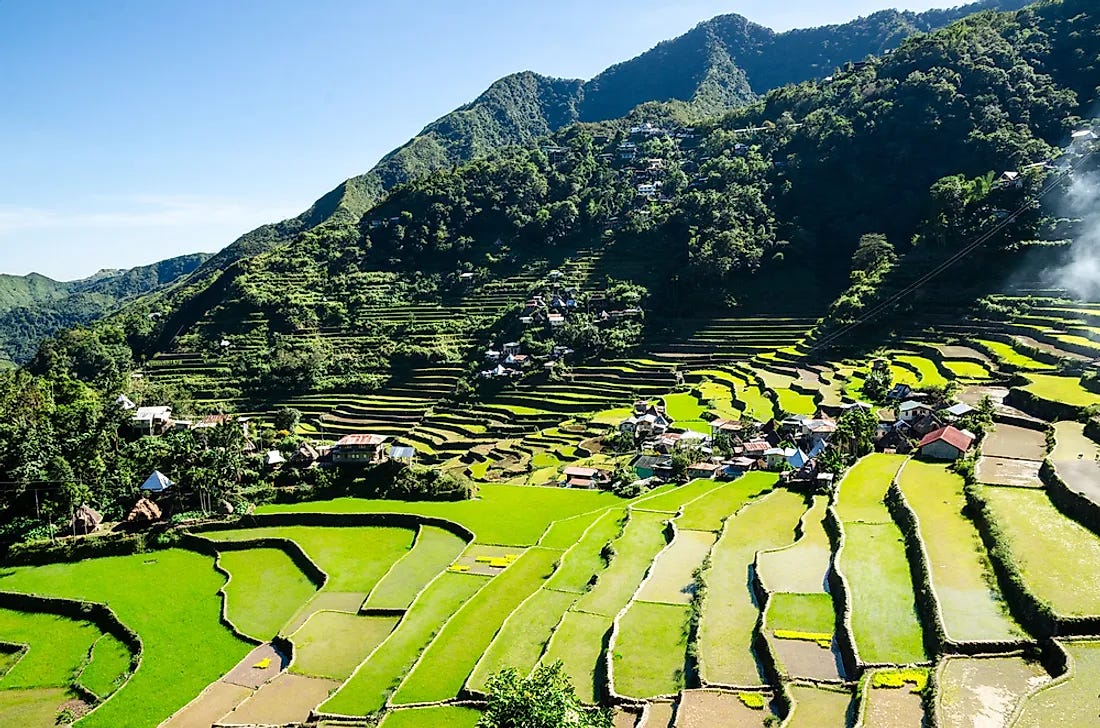
This is the mindset that I’ve internalized for so long, and honestly, it affected how I viewed the Philippines, and how I viewed being Asian, and how I viewed the Philippines in relation to its neighbors. While Thailand can enjoy their culture and be looked at with awe and wonder by everyone, we were left with a legacy of colonial rule that we have to carry. And because of that colonial rule, we are somehow less Asian. It was a sense of envy almost, seeing that the other Southeast Asian countries have these ancient temples, write in traditional scripts, wear these beautiful clothing seemingly spun with gold and be proud of it, and have their cuisine be adored while any Filipino food in mainstream media was presented as something to eat on Fear Factor or seen as either bizarre or too oily and not spicy enough. In the eyes of others, we’re too Western for the other Asians, a mindset that has been internalized in me and I’m sure in the minds of other Filipinos. Questions about how Asian we really were came in as intrusive thoughts, and for that, I could not give a straight answer for the longest time.
All of the above is what I used to think.
Ever since I started to go a little bit deeper on the surface, I found that so many of my previously held assumptions were not as true as I thought. To say we are just a Westernized country in Asia culturally isolated from our neighbors is way too oversimplistic at best, and isolationist at worst.
Reading about the different cultures of the Philippines and getting engrossed in so many different traditions that are sometimes to confined to a a few ethnic groups in a specific region, I already saw my old assumptions start to crack. Surely, they don’t practice punnuk, canao, sailing paraw boats, mano, or play kutiyapi in other former Spanish colonies. The cracks started to form even more so when the Philippines started gaining more attention as a topic on social media or on YouTube. In the comment sections of these videos, other Southeast Asian people, Malaysians and Indonesians especially, started leaving comments about how similar our cultures actually are. Seriously, this is how I found out “bayanihan” also exists in Indonesia, as well as “lechon” and “kamayan feast”, well, at least their version of it. Reading those comments also helped me find out that the numbers 1-10 in Tagalog and Bahasa Jawa are really similar. All I did was scroll through the comments sections under these videos and then fact checked them to make sure they were correct.
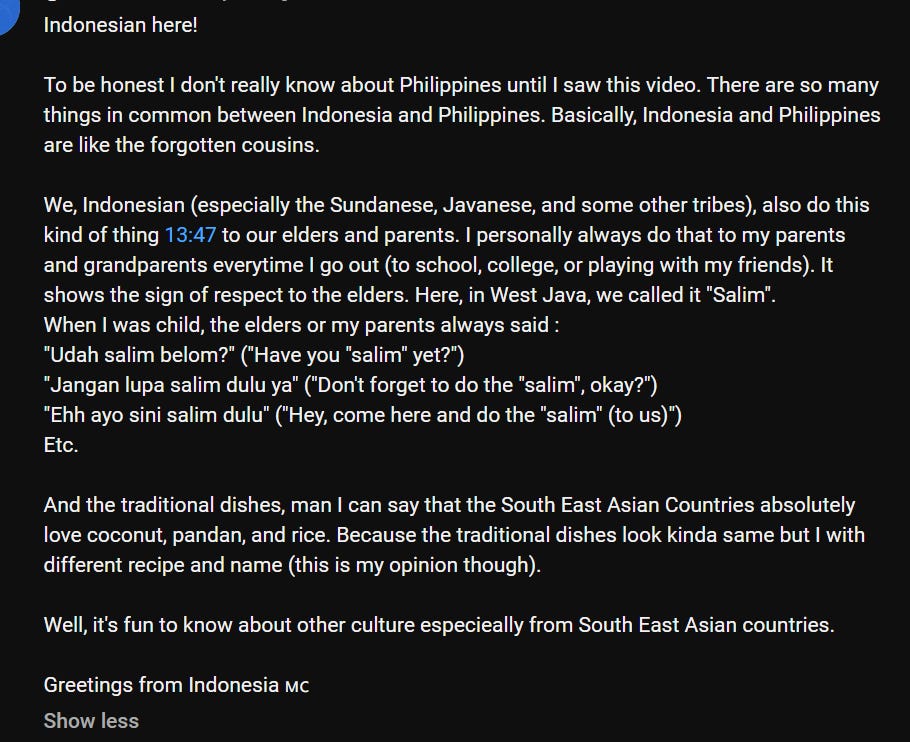

Around 2019-2020, I went down this rabbit hole of discovery. The pandemic hit, so I was given all this free time to do a deep dive, and eventually start writing on Quora. I discovered even more cultural traditions practiced by the Tausugs, the Subanen, the Ivatan, the Ilocanos, and even some provincial traditions of the Tagalog people. I also began to look into cultural traditions in Indonesia, Malaysia, Vietnam, Thailand, and Cambodia, and even delved into cultural traditions by specific regions and ethnicities within these already multi-ethnic countries, only to uncover more similarities I never thought would be there. For example, tinikling isn’t the only bamboo stick dance, and the Philippines hardly has sole ownership of this kind of dance. Go to Vietnam, a similar dance tradition called Mua Sap is practiced by the ethnic minorities up in their highlands. Those people also got rice terraces too! Go south to Malaysia, the ethnic Murut people of Sabah have their counterpart, the Magunatip, but with way more bamboo and intense rhythm and stomping.
Another fun example, halo-halo! Shaved ice with many sweet toppings and ice cream? Turns out every country in Southeast Asia has their own version! There’s cendol, ais kacang, chè ba màu, and namkhaeng sai, just to name a few. Ginataang bilo-bilo in Filipino cuisine is equivalent to bua loi in Thailand. Filipino adobo has such a similar taste to Malaysian pongteh chicken, an observation I made when I got to travel to Malacca. Balut is enjoyed in both the Philippines and in Vietnam as a street snack. Puto in the Philippines is actually in no way related to the Spanish curse word, but the Malay word putu, and it means the same thing. And so on, and so forth.
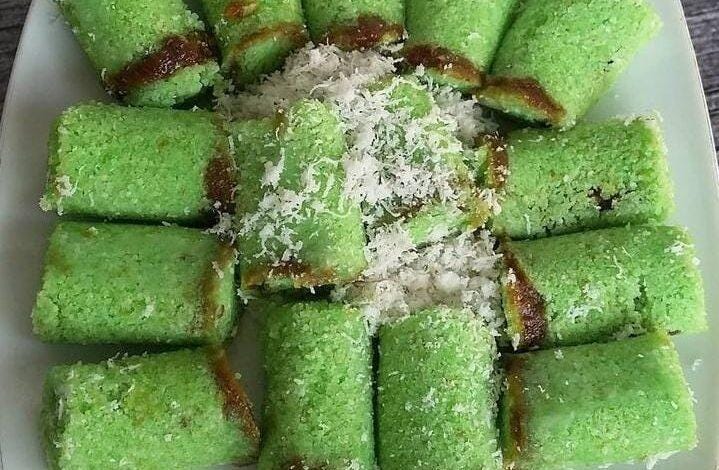
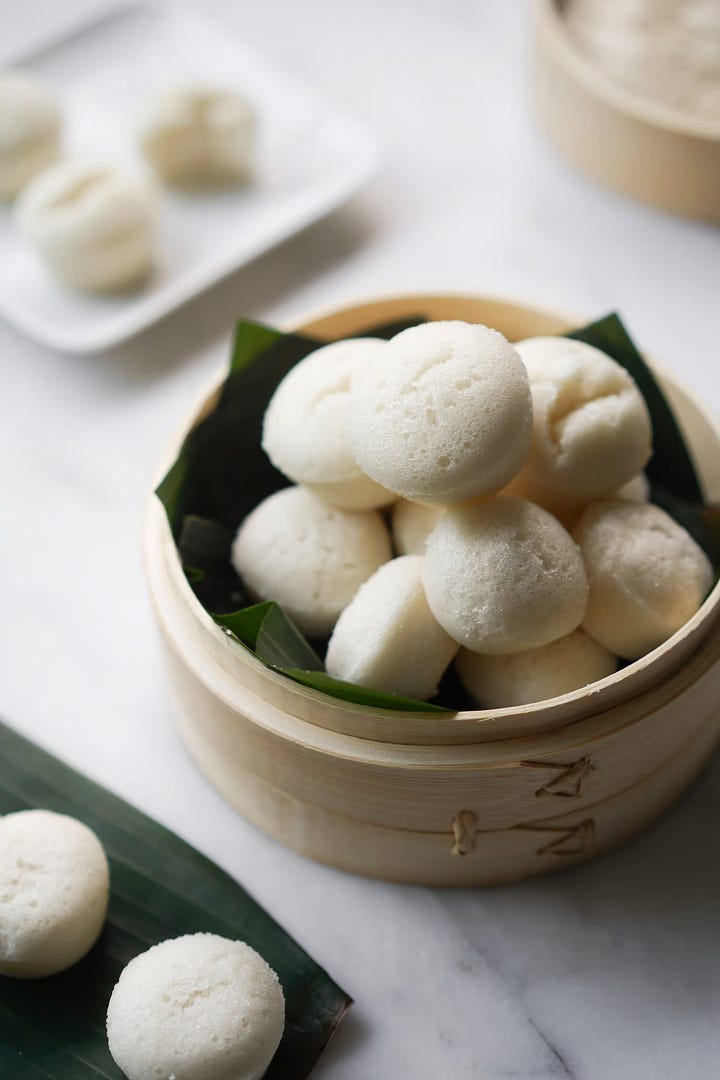
Even a quick glance at some national symbols already points to some similarities I couldn’t ignore. The white jasmine is the national flower in both the Philippines and Indonesia. The water buffalo is the national animal in both the Philippines and Vietnam. Makes sense given these two are agrarian societies.
After doing all of this digging, I have come to find that this idea that the Philippines being so isolated from its Southeast Asian neighbors is just, not the truth. This is why I shake my head whenever I hear another Filipino talk about how we should’ve kept Spanish as a national language, how we’re “basically Latinos”, or how we all have Spanish blood, because let’s face it, I don’t think those points hold water. In fact, recent studies3 has come out and found that genetic influence of Spain in the Philippines is limited4, so that story people get told about having a Spanish ancestor and that someone must be part-Spanish because they might have a straight nose might just be false. Plus, the Philippines has its own languages as it is, so there is no need to have another Western language be a lingua franca.
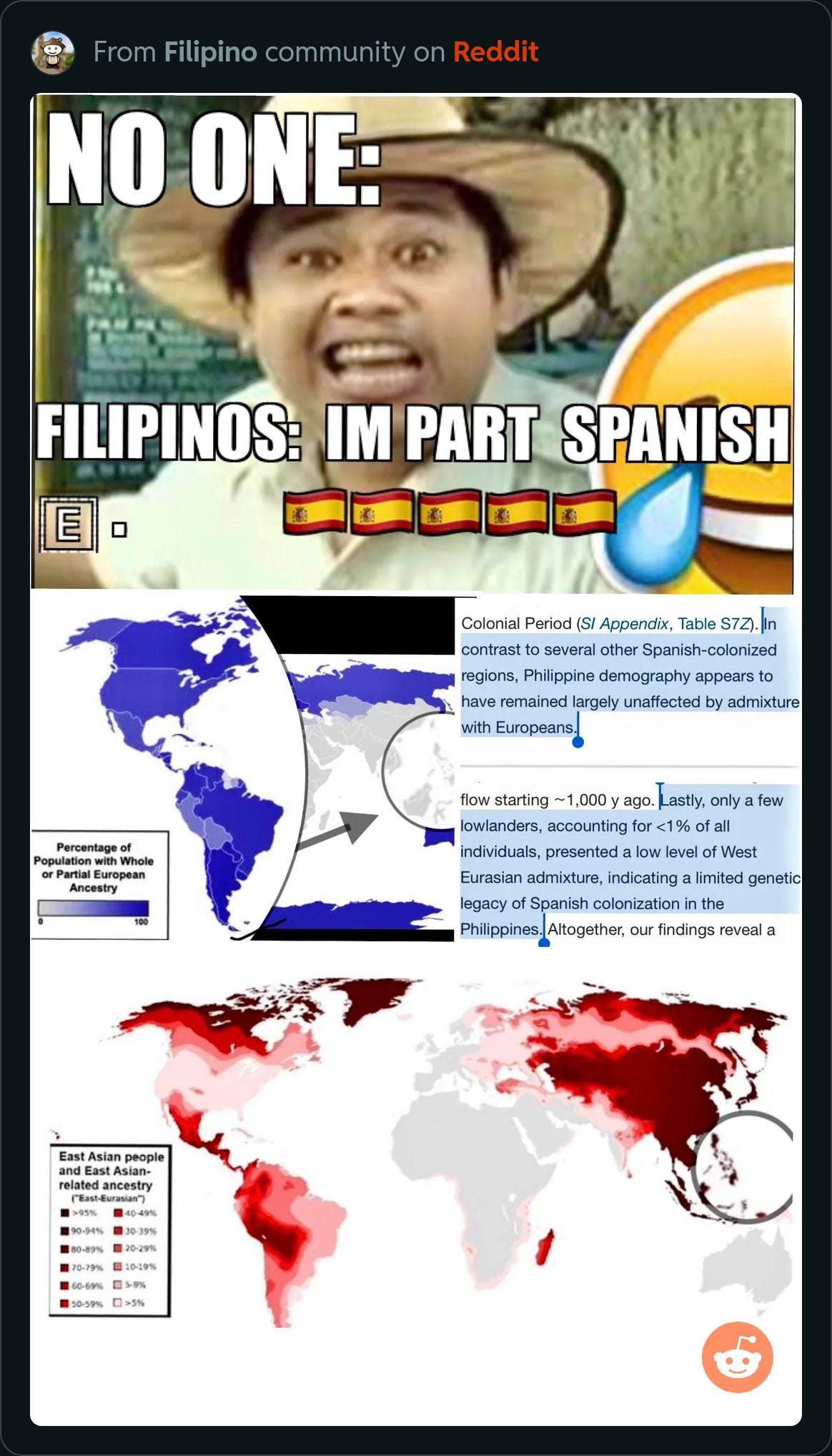
And furthermore, this idea that colonization made us more diverse is so false. A country of over 175+ ethnic groups is already diverse on its own. The influence of Spain and America are not the reasons for diversity that already abounds plenty.
Of course, I will concede to the idea that Catholic Filipino culture has things in common with Catholic Mexican culture. Certain Catholic traditions and processions you find in the Philippines mirror the ones you find in Mexico. However, I just see this cultural similarity as one part of the mosaic, sharing space with the greater Southeast Asian culture that, is still very much present.
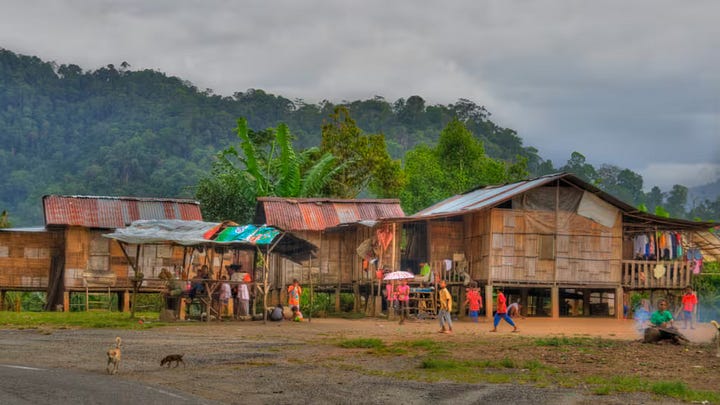

So, as it turns out, the Philippines does have a lot in common with its neighbors. It wouldn’t be part of ASEAN if that weren’t the case. We aren’t culturally isolated as previously thought. We’re not a derivation of Western culture. We don’t have to question whether or not we belong in Southeast Asia, if we can even relate to neighboring Malaysia, or even Thailand and Myanmar, because I think the cultural connections and commonalities are very much there. Re-orienting ourselves back to Southeast Asia can prevent further identity crises as well as ground us to who we are. Filipinos, whether they live in the country or are part of the diaspora, from here on out shouldn’t have to feel like they are left out of Southeast Asia. I write on here to give a different take on what it means to be Filipino, and where it stands in the world. These narratives that we stick out like a sore thumb and “don’t really belong anywhere” doesn’t serve us anymore. I think it’s clear where the country lies.
So what can we do moving forward?
Start with a deep dive into your own history, your own culture. Read about the history beyond what Western narratives have pushed on us, and what current education system perpetuates. Read about the many indigenous groups, and read about your own. Look for folk traditions that are still being practiced (you can even do this in your area!), keep a watch for local superstitions and beliefs, look for local recipes, visit the local markets and see the produce available. Seek out local weavers to get a sense of the traditional textiles. Take note of how much of what you observe is either a product of colonization or a product of local development. Go outward without leaving the islands, learn about the other cultures that exist within the country. The next province over might speak a different language (or even a different religion).
Then, you’re going to learn about your neighbors. Don’t stop at the surface-level facts.
A word of advice: stop assuming you don’t have much in common with your neighbors. The cultural traits you have, they have as well. It may look a little different, but you’ll still find it to be familiar. Seek them out. Learn about them.
If you have the means to, travel to the other countries and see for yourself. Visit the floating villages in Cambodia. The fishing villages off the coast of Ha Long Bay. Or the rice terraces in Sapa, or Bali. Try as much of the local foods in the many warung scattered all over Indonesia. Try mangos in Thailand and compare them to how you eat them locally.
Alternatively, you could simply talk to someone from that country on the internet. Share ideas. Share languages. Let them talk about their life and talk about yours. There’s going to be some common ground. Just because someone might follow a different religion to you, and might adhere to those practices doesn’t mean they’re completely different.
ASEAN is an international organization to promote political, economic, and social cooperation between the nations of Southeast Asia.
This talking point is heard more so among diaspora Filipinos.
https://web.archive.org/web/20190522144837/https://genographic.nationalgeographic.com/reference-populations-next-gen/
https://www.pnas.org/doi/epdf/10.1073/pnas.2026132118


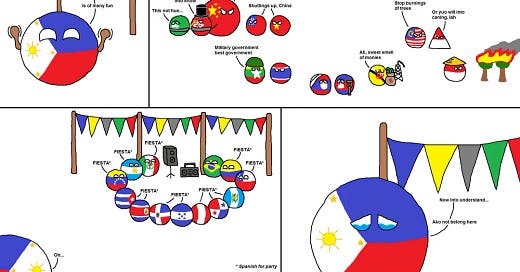



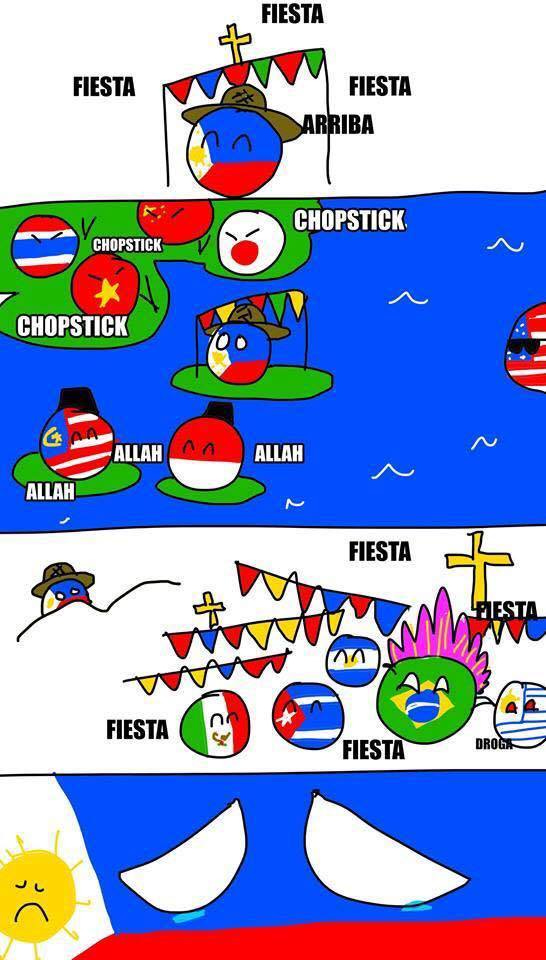



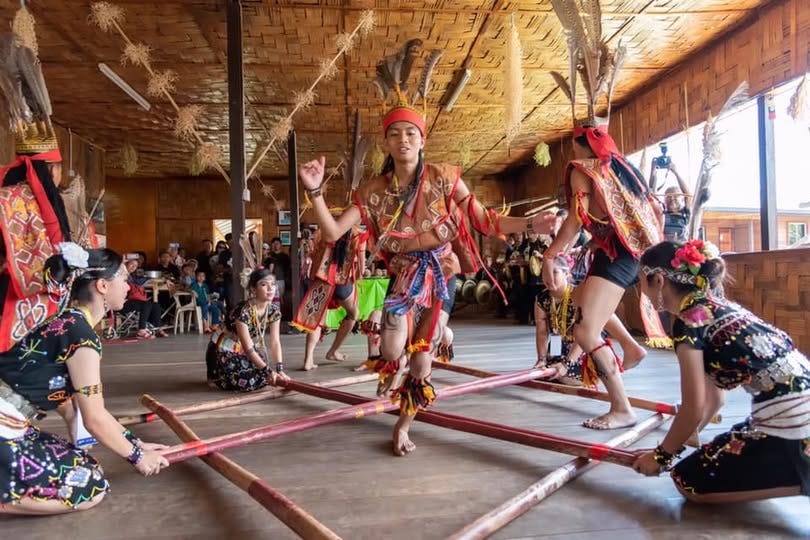

Such a wonderful introduction to the dilemmas surrounding the Filipino identity.
Personally, I've never really felt culturally isolated from the rest of Southeast Asia. Although of course I don't discount the experiences of those who do - I'm always cognizant of the fact that my experiences are only ever my own and I can't speak for anyone other than myself. But I spent a lot of time traveling amongst the ASEAN countries as a teen and young adult in my early 20s (because of course all those destinations are visa-free haha) and I also read Southeast Asian authors widely, and I think that helped me see and appreciate hundreds of tiny little similarities. One of my favorite things ever is when a post went viral pointing out that Southeast Asians all post online in a similar way - starting out their sentences in English and then trailing off in their respective native languages. And of course all the cultural similarities you mention here as well. I really, really, really loved reading this post!
I actually wrote something similar to this, although it's a lot more in my feelings and less rooted in evidence the way your post is haha. https://oatmilklatteboutique.substack.com/p/what-being-southeast-asian-means
Subscribed! I can't wait to read more from you!